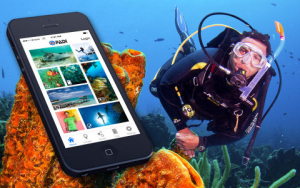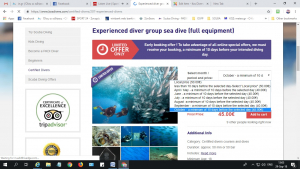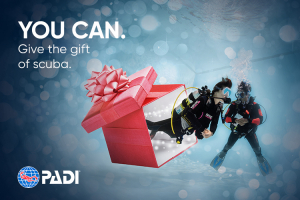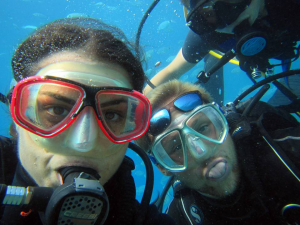Kostas Marmarinos
Aqualized dive adventures
Για καταδύσεις στην ευρύτερη περιοχή της Αθήνας, εκπαίδευση αυτοδυτών, ενοικίαση εξοπλισμού, πλήρωση φιαλών, αλλά και οργανωμένες καταδυτικές εκδρομές σε κάθε γωνιά του πλανήτη, εμπιστευτείτε το Aqualized dive adventures.
Διεύθυνση
Ηλέκτρας 2, Λάκκα,
Ανάβυσσος, 19013
Τηλέφωνα
(+30) 22911 59651
(+30) 6932 482779
Ε-Mail
[email protected]
Padi app and ecards
The PADI App features a number of handy built-in tools to support student divers and PADI Professionals alike, but it’s also a central hub that brings the wealth of PADI membership knowledge straight to your fingertips whenever – and wherever – you might need it.
In addition to the travel, social links, eCards, training logs and other essentials, you can also view the PADI Pros’ Site straight from inside the PADI App. No more switching between apps on your phone or searching through bookmarks – just click on the “Pro” button from the main App homepage, and you’ll be taken to your usual PADI Pros’ Site login page. Enter your PADI Single Sign-On details and you’ll be able to conveniently access everything the PADI Pro’s Site has to offer, from the latest digital PADI Instructor Manual, to job vacancies, latest news and marketing updates.
Padi eCards video tutorial and instruction for students https://www.facebook.com/watch/?v=278603129920222
Medications and Fitness to Dive
28 Sep 2018 | Brian Harper
Medications and Fitness to Dive
Our medical staff often receive questions on whether it’s safe to dive while taking a particular medication. Even though their is not a straightforward answer to this question, here we provide some useful indications.
DAN (as any other medical organisation) does not keep a repository of data on how medications are affected by the diving environment. No formal research trials about the influence of drugs on human divers in an underwater environment can be conducted, out of ethical concerns. Anecdotal reports of dive accidents are of limited value in assessing if it is safe to dive while taking a particular drug. Several physical and physiological factors are always involved, so it is extremely difficult to isolate a single variable.
However, by considering elements such as the medical condition being treated, the physical demands on divers whilst underwater, and known facts about a drug from clinical trials conducted on land, sound advices can be provided about the suitability of diving while taking medications.
General Considerations
Most divers asking DAN advices about medications and diving are concerned about new side effects occurring at depth. It is possible that certain drugs might potentiate (enhance) or be potentiated by the narcotic effect of nitrogen. A diver should consider this possibility if planning to dive deeper than 24 metres while taking a drug that warns against drinking alcohol or operating heavy machinery. Aside from this theoretical concern, most drugs are not suspected to incur specific biological hazards due to immersion, pressure or breathing-gas mixture. It is understandable for divers to be apprehensive about new side effects occurring during a dive, but the more important issue to medical professionals is whether the underlying medical condition might make diving less safe. The injury or illness being treated is much more likely than the medication to exclude someone from diving.
Reduced physical fitness is not uncommon among people treated for medical conditions. Although diving itself is a relaxing activity for most recreational divers, lifting and wearing heavy equipment as well as entering and exiting the water can cause fatigue. Divers should always have sufficient physical capability to fight currents, perform a long surface swim or help a buddy in case of emergency. They should not be at increased risk of barotrauma due to congestion, and they should not have symptoms such as numbness, tingling or pain that might be confused with decompression sickness (DCS) after a dive.
Furthermore, it is important to consider whether a diver has experienced any side effects from a medication, how long he or she has been taking it and what other drugs the diver is taking. Before diving while taking a particular drug, the person should have experience with it on land. For most prescription medications, 30 days is recommended to ensure the dosage is correct and reveal any side effects the diver is likely to experience. At least one doctor should be aware of all medications an individual is taking to minimize the risk of drug interactions. A diver who experiences any side effects that could cause distraction or decreased awareness underwater should not dive.
These are general considerations, but there are also some specific questions and points for discussion relevant to particular types of medications, which should be addressed during the physician’s evaluation, as well as in the diver’s self-assessment.
Orthopedic pain medications and muscle relaxants
• Could pain or impaired mobility cause distraction or physical limitation during a dive?
• Might heavy dive gear exacerbate an injury?
• Could side effects of prescription-strength pain relievers diminish a diver’s alertness or awareness?
• Might soreness, numbness or tingling be confused with DCS after a dive?
Neurologic drugs
• Are the diver’s physical capabilities diminished?
• Has the diver ever experienced a seizure?
• Could any drugs the diver is taking cause side effects that might be confused with DCS?
Psychiatric medications
• Might symptoms or a drug’s side effects impair judgment, behavior, awareness or ability to handle stress?
• Is the patient’s condition managed successfully or in remission?
Gastrointestinal drugs
• Is the patient at risk for gas trapping that could cause barotrauma on ascent?
• Is the diver dehydrated due to vomiting or diarrhea?
A diver should consider this possibility if planning to dive deeper than 24 metres while taking a drug that warns against drinking alcohol or operating heavy machinery.
Cardiovascular drugs
• Does the patient have the cardiovascular health and exercise capacity to safely dive?
• Is a stress electrocardiogram (EKG) needed to confirm good cardiac fitness?
Respiratory medications, including inhaled corticosteroids
• Is there any reason to suspect air trapping or impaired ability to breathe while diving?
• People with asthma should undergo an exercise challenge test, which consists of pulmonary function testing before and after exercise in a clinical setting.
Decongestants, antihistamines and intranasal steroids
• Is the diver congested (and therefore at increased risk of barotrauma)?
• Has he or she been congested recently?
• If the medication wears off at depth, will it cause a problem?
• How might the potential sedative effect of antihistamines affect the diver?
Hormones, insulin and medications used to treat diabetes
• Are the patient’s hormone levels stable and close to normal?
• Is the diabetic diver at risk for hypoglycemia with exercise?
• Divers with diabetes must have good health and fitness and be experienced managing blood glucose levels while exercising.
Antibiotics
• Does the patient have an illness or infection that might be complicated by diving?
Chemotherapy drugs
• Is the person physically fit to dive?
• Lung cancer warrants particular consideration.
• Medical ports are generally not a problem, but they should be padded well.
These points should be considered in the context of both the symptoms of the medical condition and the side effects of any drugs used to treat it. The focus should be on whether any of these factors might lead to impairment of a diver’s physical capabilities, awareness, reaction time or judgment. This list is by no means exhaustive, but it highlights some of the concerns that accompany certain medical conditions and the drugs used to treat them.
Any medical condition or medication should prompt a diver to seek a physician’s approval prior to diving. As always, DAN is available to discuss the relevant concerns of injuries, illnesses and the medications used to treat them. If you have questions, email DAN at [email protected].
This article first appeared on Alert Diver printed edition Q1 2016.
Low availability for October. 25th of October 2018 last diving day of the season.
Hurry up with your online bookings as there is low availability for some dates on October!
25th of October 2018 last diving day of the season!
elearning
elearning for all Padi courses
TripAdvisor's 2018 Travelers' Choice Award
We are so proud of our dive team, being named the #1 activity in Psalidi area for TripAdvisor's 2018 Travelers' Choice Award. I hope this award will further encourage everybody here to offer the best for our guests.Thank you all for your reviews.
Low availability for early online booking on July
gift voucher
Looking for a Christmas gift or a gift for your loved one? Or maybe a bonus for your employees? Dives can be scheduled by email or at the shop uppon your arrival!
Deepest Dive First? Not Anymore
One of sport diving's most sacred rules has been challenged and found lacking: the prohibition against reverse dive profiles (following a shallow dive with a deeper one) that resulted in a phrase memorized by millions of divers: "Always do your deepest dive first."

Well, it turns out, if you're using a divecomputer for multilevel diving, you can do your dives in any order you wish. Of course, use your dive computerintelligently and stay within the no-decompression limits. Yes, this reverse profile is fine--50 feet for 45 minutes followed one hour later by a dive to 90 feet for 20 minutes. The U.S. Navy tables would require an 18-minute decompression stop at 10 feet, and the PADI RDP does not allow for the second dive, as it is off the tables. All modern dive computers allow for these reverse profile dives.That's the conclusion of the "Reverse Dive Profiles Workshop" conducted at the Smithsonian Institution in Washington, D.C. Under the guidance of the Smithsonian's Michael Lang, the American Academy of Underwater Sciences, DAN, DEMA and Dive Training magazine, 49 leaders from a cross section of diving gathered to listen to 29 scholarly papers delivered over a two-day period, followed by eight discussion sessions to hammer out consensus findings.
The conclusions of the workshop are historic. Not only do they provide greater freedom for experienced computer divers to plan and execute multilevel dives; but the broader impact will likely be that the entire dive industry will take a more open-minded look at other rules of diving, skills and procedures, and then ask "Why?"
This spirit of re-evaluation was underscored in the workshop's opening address when John Lewis, Ph.D., the leading programmer of dive computers, presented a paper on "The Evolution of Repetitive Diving: From Haldane (1908) to Hardy (1999)." Dr. Lewis was referring to physiologist J.S. Haldane's original work on decompression tables at the beginning of the century and Rodale's Scuba Lab Director Jon Hardy's work at the end of it. Hardy's Scuba Lab test results on reverse profiles, reported in the July 1999 issue of Rodale's Scuba Diving (RSD), challenged the need to dive deep first and ignited such controversy that a follow-up article defending the tests appeared in RSD's October 1999 issue.
But this was not the first challenge to the absolute rule to always dive deep then shallow. In RSD's July 1994 issue, Hardy, John Brumm and Val Hodges first challenged the concept based on Scuba Lab's early dive computer tests. And, in late 1988, at the AAUS Dive Computer Workshop, Hardy presented a paper based on the field experience of working divers who dived in a so-called "out of order" manner with no known ill effects.
The cumulative findings make it clear: Recreational divers are no longer limited to the severe confines of printed tables, but can use modern dive computers to expand their dive opportunities, to dive more efficiently, more comfortably, more safely and more enjoyably.
Key Findings of the "Reverse Dive Profiles Workshop"
-
Historically neither the U.S. Navy nor the commercial sector have prohibited reverse dive profiles.
-
Reverse dive profiles are being performed in recreational, scientific, commercial and military diving.
-
The prohibition of reverse dive profiles by recreational training organizations cannot be traced to any specific diving experience that indicates an increased risk of DCS.
-
No convincing evidence was presented in the workshop that reverse dive profiles within the no-decompression limits lead to a measurable increase in the risk of DCS.
-
The attendees found no reason for diving communities to prohibit reverse dive profiles for no-decompression dives less than 40 meters (130 feet) and depth differentials less than 12 meters (40 feet).
Proceedings of "Reverse Dive Profiles Workshop"
The complete text can be ordered from:
American Academy of Underwater Sciences (AAUS), 430 Nahant Rd., Nahant, MA 01980-1696; tel: (781) 581-7370, ext. 334; fax: (781) 581-6076; e-mail: [email protected]; web: www.aaus.org.
Undersea and Hyperbaric Medical Society (UHMS), 10531 Metropolitan Ave., Kensington, MD 20895; tel: (301) 942-2980; fax: (301) 942-7804; e-mail: [email protected]; web: www.uhms.org.
http://www.scubadiving.com/training/basic-skills/deepest-dive-first-not-anymore?OtuDFXdrpE1DcgI1.01

















